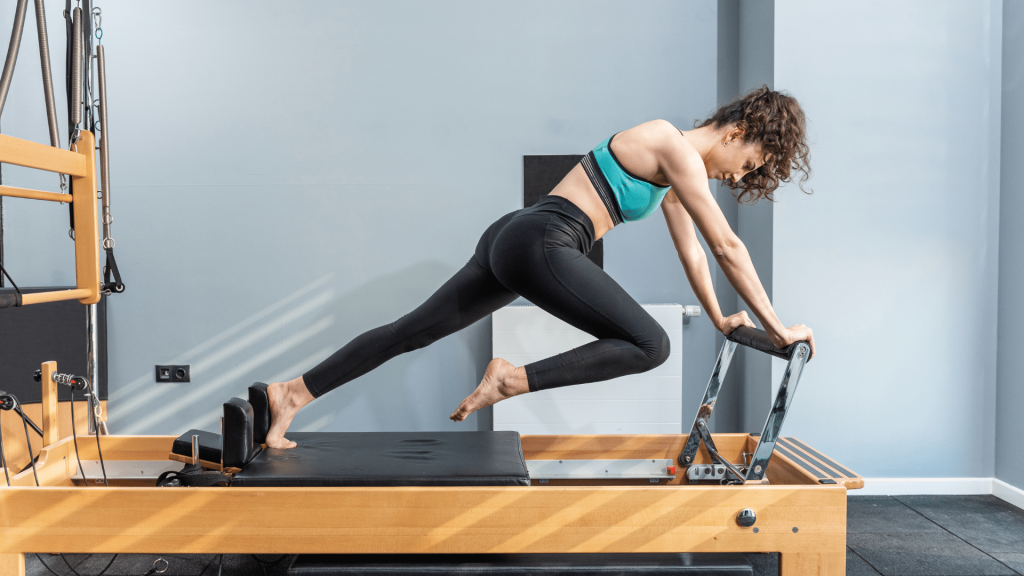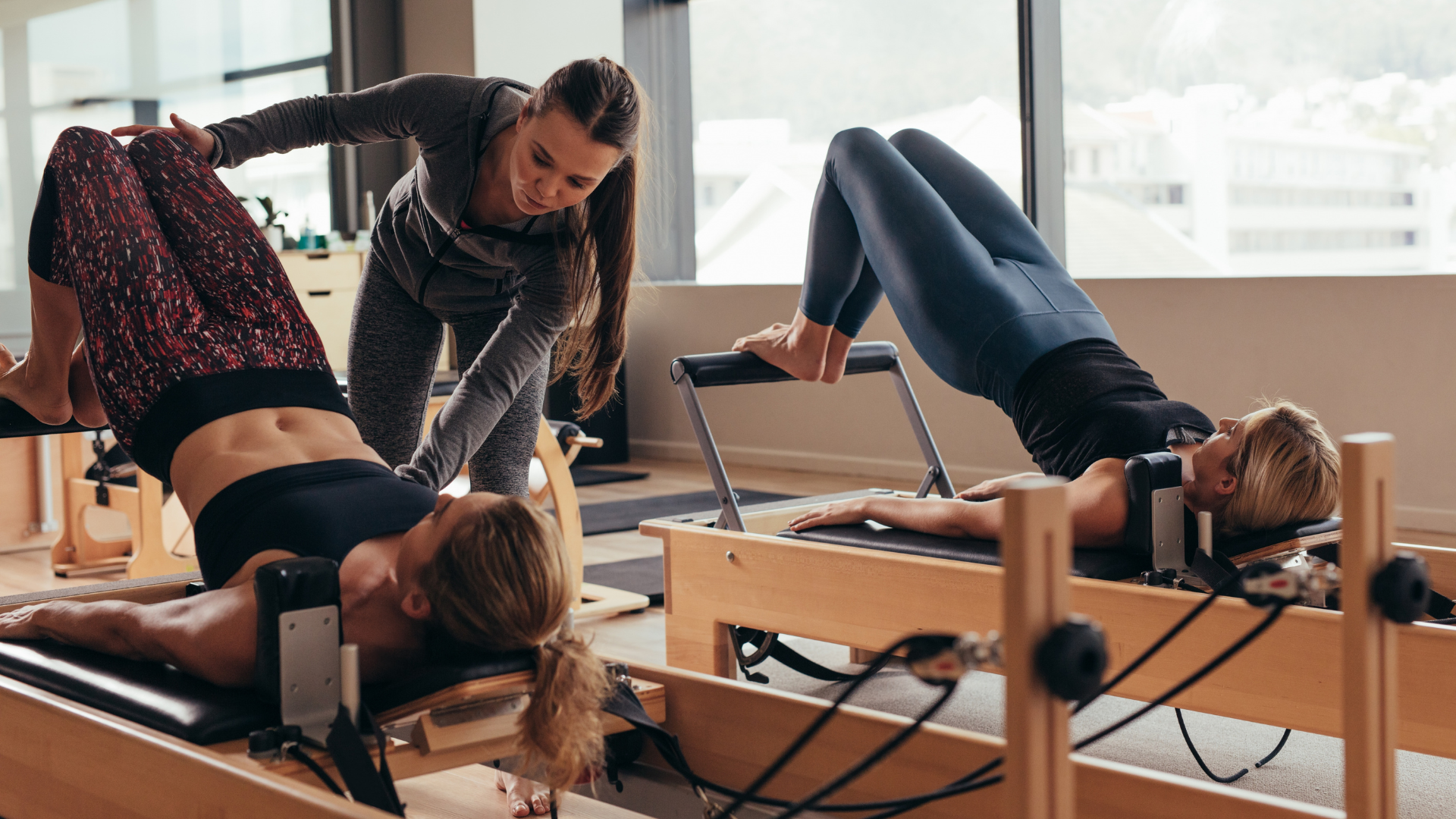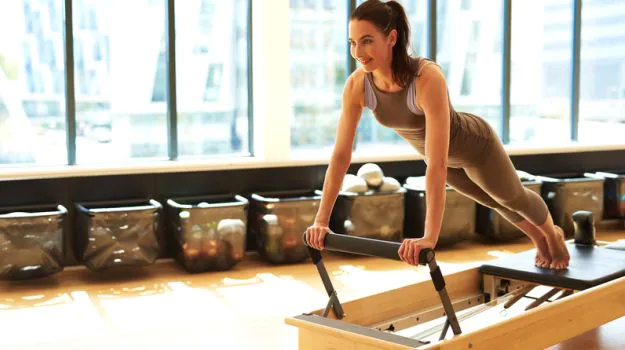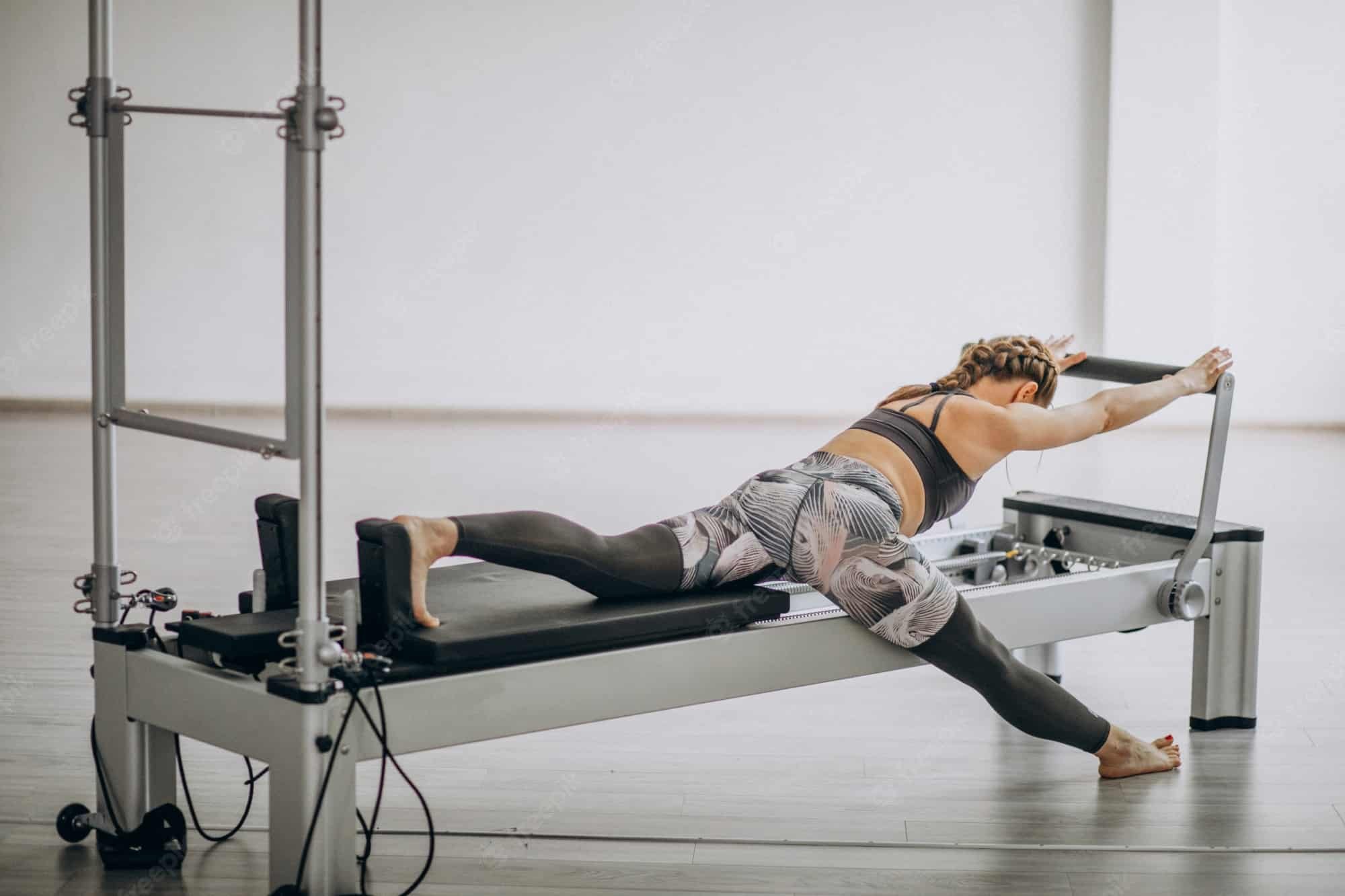Pilates is a popular workout claimed to help burn fat and lose weight. But with different Pilates styles and routines available, it’s unclear if it truly helps slim down. This guide looks at the evidence on Pilates and weight loss. We examine how many calories Pilates burns compared to other workouts, and if building muscle through Pilates causes you to drop pounds. By analyzing key research studies, we clarify whether all the talk around Pilates and weight loss holds up, or if its slimming effects are just hype.

Contents
Does Pilates Help You Lose Weight?
Pilates can aid weight loss by improving muscle tone, flexibility, and overall fitness. However, its primary focus is not calorie burn, so combining it with cardio and a healthy diet is key for significant weight loss. While it may not be as calorie-intensive as some other forms of exercise like running or high-intensity interval training (HIIT), it can still contribute to weight loss and overall fitness in several ways:
1. Muscle Building and Toning:
Pilates involves controlled movements targeting specific muscle groups, fostering the development of lean muscle mass. As muscles are engaged and strengthened, they require more energy even at rest, thereby increasing the body’s overall calorie expenditure. This gradual increase in muscle mass can contribute to a higher metabolic rate over time, aiding in weight loss and maintenance.
2. Improved Posture and Alignment:
Through exercises emphasizing core strength, spinal alignment, and body awareness, Pilates helps individuals achieve better posture and alignment. Improved alignment not only enhances physical appearance but also facilitates more efficient movement patterns during exercise and daily activities. As a result, individuals may experience increased mobility, reduced discomfort, and a greater ability to engage in physical activities that support weight loss.

3. Increased Flexibility:
Pilates incorporates stretching exercises aimed at enhancing flexibility and range of motion in joints and muscles. By regularly performing these stretches, individuals can reduce muscular tension and stiffness, which may inhibit movement and increase the risk of injury. Improved flexibility not only enhances the effectiveness of other workouts but also promotes overall well-being, making it easier to engage in physical activities that support weight loss goals.
4. Mind-Body Connection:
Pilates emphasizes mindfulness and proper breathing techniques during exercises, fostering a strong mind-body connection. By focusing on alignment, form, and breath control, individuals develop greater awareness of their bodies and sensations. This heightened awareness extends to hunger cues and eating behaviors, allowing individuals to make more conscious and mindful choices about their dietary intake. By addressing both physical and emotional aspects of weight management, Pilates can support sustainable weight loss.
5. Stress Reduction:
Engaging in Pilates, like other forms of exercise, triggers the release of endorphins, neurotransmitters that promote feelings of well-being and reduce stress. Regular practice of Pilates can help individuals manage stress levels more effectively, reducing the likelihood of stress-induced eating or cravings for unhealthy foods. By incorporating stress-reducing activities like Pilates into their routines, individuals can create a more supportive environment for weight loss and overall health.
6. Overall Fitness:
While Pilates may not burn as many calories as high-intensity cardio workouts, it provides a comprehensive full-body workout that improves cardiovascular health, muscular endurance, and overall fitness. By engaging multiple muscle groups simultaneously and promoting proper movement mechanics, Pilates helps individuals develop functional strength and stamina, making it easier to perform daily tasks and participate in other physical activities that support weight loss.
What Muscles Does Pilates Target?
Pilates is a form of exercise that focuses on controlled movements to improve core strength, flexibility, and posture. While it doesn’t target a single muscle group, it works many muscles throughout the body, including:

- Core Muscles: The core muscles, including those in your stomach, pelvis, hips, and lower back, are the primary focus in Pilates. Strengthening and stabilizing your core is essential for overall body strength and stability.
- Arm Muscles: Pilates exercises such as the Hundred not only target the abs directly but also engage the arm muscles, helping to tone and strengthen them.
- Leg Muscles: Various Pilates movements, like the shoulder bridge, Pilates swim, and leg kick series, work on strengthening the leg, glute, and shoulder muscles. These exercises contribute to improved lower body strength and flexibility.
- Overall Muscle Engagement: Pilates is designed to engage multiple muscle groups simultaneously, promoting full-body conditioning and improved muscle tone.
- Muscle Lengthening and Sculpting: The precise movements in Pilates are aimed at lengthening and sculpting muscles, leading to a more toned and sculpted physique.
- Stability and Alignment: Pilates emphasizes proper alignment and posture, which helps in strengthening muscles throughout the body and improving overall stability and balance.
- Low-Impact Exercise: As a low-impact workout, Pilates is gentle on the joints while still effectively engaging various muscle groups for a comprehensive strengthening workout.
- Flexibility: In addition to muscle strength, Pilates also works on improving flexibility, ensuring that your body can move efficiently and with a full range of motion.
- Full-Body Toning: With a focus on core stability, muscle sculpting, and overall strength, Pilates offers a full-body workout that targets multiple muscle groups for comprehensive toning and conditioning.
What Type of Pilates is Best for Weight Loss?
While any form of Pilates can contribute to weight loss as part of a healthy lifestyle, some types might be more effective for maximizing calorie burn and promoting weight loss efforts. Here are a few options to consider:

1. Reformer Pilates:
- Utilizes a specialized reformer machine with springs and straps that adds resistance and allows for a wider range of movements.
- Offers higher intensity workouts compared to traditional mat Pilates, potentially leading to greater calorie expenditure.
- Be sure to find a qualified instructor to ensure proper form and avoid injury.
2. HIIT Pilates (High-Intensity Interval Training Pilates):
- Incorporates short bursts of intense exercise followed by recovery periods.
- Elevates your heart rate and burns calories efficiently in a shorter timeframe.
- This might be a good option for individuals who enjoy high-intensity workouts and are looking for a time-efficient exercise option.
3. Cardio Pilates:
- Combines Pilates movements with cardio exercises like jumping jacks, burpees, or jumping rope.
- Increases your heart rate and burns more calories compared to traditional mat Pilates.
- This option can be a good choice for those who enjoy a combination of cardio and strength training.
4. Power Pilates:
- Similar to traditional Pilates, but focuses on building strength and endurance through more challenging exercises and faster repetitions.
- Can help increase muscle mass and potentially boost your metabolic rate for increased calorie burning.
Important factors to consider:
- Your fitness level: Choose a type of Pilates that matches your current fitness level to avoid injury and ensure you can perform the exercises effectively.
- Your preferences: Select a type of Pilates you enjoy to increase your chances of sticking with it consistently.
- Consulting a healthcare professional: They can advise on the most suitable type of Pilates for your individual needs and health conditions.
Frequently Asked Questions:
How many calories can you burn with a Pilates class?
In a typical 50-minute beginner Mat Pilates class, you can burn around 175 calories, while an advanced Mat class may burn about 254 calories. Opting for a Reformer Pilates session can potentially increase calorie burn due to engaging more muscles and raising the heart rate.
Can Pilates be a primary method for weight loss?
While Pilates helps tone muscles, improve posture, and increase flexibility, it may not be the most effective method for weight loss on its own. To achieve substantial weight loss, combining Pilates with cardio exercises and maintaining a healthy diet is recommended.
How does Pilates benefit overall well-being?
Pilates offers full-body conditioning, improves movement patterns, enhances posture, and increases muscle tone without building bulk. Beyond physical benefits, Pilates can also reduce stress, increase mindfulness, and promote overall well-being.

Hello, I’m Ravindra. Over the years, I’ve immersed myself deeply into the world of fitness and health, transforming both my body and mind. Writing has allowed me to share my journey, insights, and expertise with those just starting out and seasoned fitness enthusiasts alike. Beyond just routines and diets, I believe in inspiring others to adopt a holistic approach to well-being.
